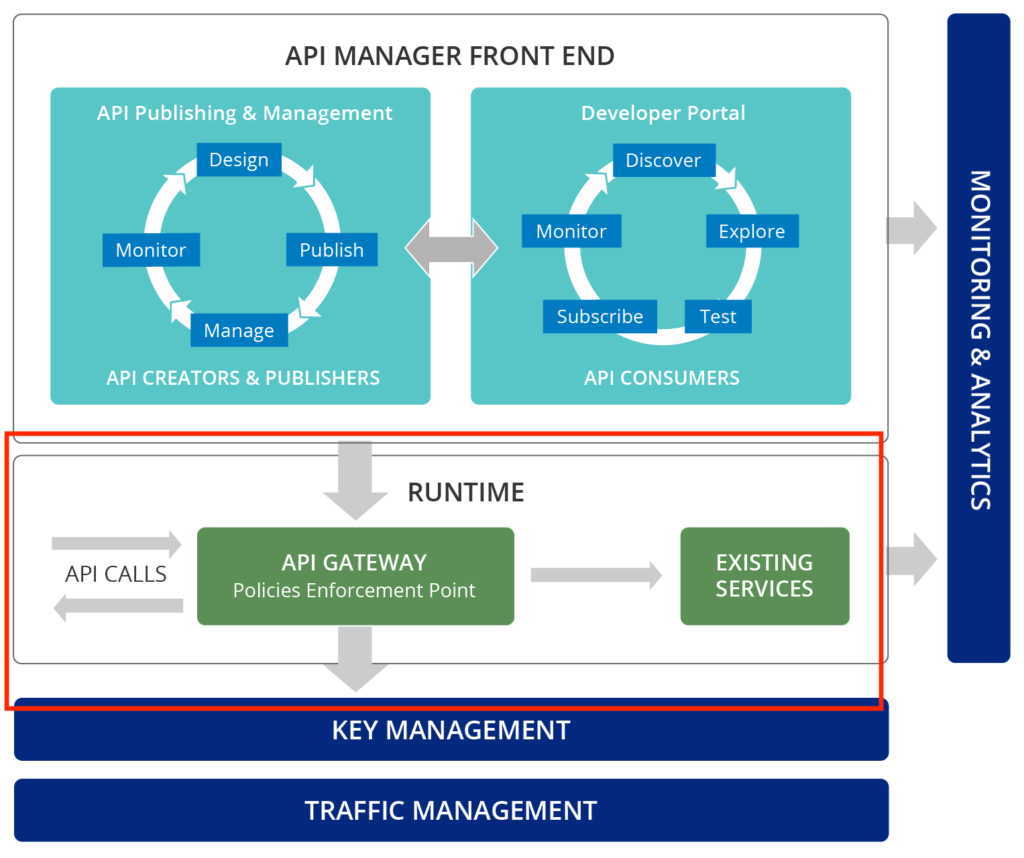Introduction
In today’s interconnected digital landscape, APIs (Application Programming Interfaces) serve as the backbone of modern software development, enabling seamless communication between disparate systems. However, managing and securing APIs can be complex, especially in microservices architectures where numerous services interact with each other.
What is an API Gateway?
An API gateway is an architectural pattern that sits between clients and backend services, acting as a single entry point for all incoming API requests. It serves as a reverse proxy, routing requests to the appropriate services based on predefined rules and configurations. API gateways offer a centralized point of control for managing various aspects of API communication, including routing, authentication, authorization, rate limiting, logging, and monitoring.

Key Features and Functionalities of API Gateway
- Routing and Load Balancing: API gateways efficiently route incoming requests to the appropriate backend services based on predefined routing rules. Additionally, they can perform load balancing to distribute traffic evenly across multiple instances of a service, ensuring optimal performance and high availability.
- Authentication and Authorization: Security is paramount in API-driven architectures. API gateways provide robust authentication and authorization mechanisms to secure API endpoints against unauthorized access. This includes support for various authentication methods such as JWT (JSON Web Tokens), OAuth, API keys, and custom authentication schemes.
- Rate Limiting and Throttling: To prevent abuse and ensure fair usage of resources, API gateways offer rate limiting and throttling capabilities. These features enable administrators to set limits on the number of requests allowed per user, IP address, or API key within a specific timeframe, thereby mitigating the risk of overloading backend services.
- Transformation and Aggregation: API gateways can transform request and response payloads to meet the specific requirements of clients and backend services. This includes data format conversion (e.g., JSON to XML), payload enrichment, request/response validation, and aggregation of multiple backend responses into a single cohesive response.
- Logging and Monitoring: Monitoring the health and performance of APIs is essential for proactive maintenance and troubleshooting. API gateways facilitate real-time logging and monitoring of API traffic, providing valuable insights into request/response metrics, error rates, latency, and traffic patterns.

Example of an open source API gateway: Overview of the WSO2 API Gateway – WSO2 API Manager Documentation 4.2.0
Best Practices and Challenges
To maximize the benefits of API gateways and mitigate potential challenges, consider the following best practices:
- Design for Scalability: As API traffic grows, scalability becomes a critical consideration. Design API gateways with horizontal scalability in mind, leveraging load balancing and auto-scaling capabilities to handle increasing load effectively.
- Implement Robust Security Measures: Security should be a top priority when designing API gateways. Implement strong authentication and authorization mechanisms, encrypt sensitive data in transit, and regularly audit and update security configurations to mitigate evolving threats.
- Monitor Performance and Health: Continuous monitoring of API gateway performance and health is essential for identifying bottlenecks, detecting anomalies, and ensuring optimal reliability. Utilize monitoring tools and dashboards to track key metrics and proactively address issues.
API gateways play a pivotal role in modern software architectures, providing a centralized solution for managing, securing, and monitoring API traffic. By leveraging the powerful features and functionalities offered by API gateways, organizations can streamline their API management processes, enhance security, and facilitate scalability.
